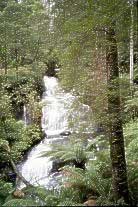|
|
|
Environmental
services
The commercialisation of environmental assets
and values appears inevitable. The potential for selling carbon
credits internationally has generated interest in ‘selling’
other environmental services such as salinity benefits and biodiversity.
The Federal Government has responded to this interest by investigating
and evaluating possible opportunities, mechanisms and prices
for selling environmental assets. In 1999 the Government released
a natural resource management discussion paper that included
information on the potential of several administrative instruments
to improve environmental and resource management and conservation.
The paper described how these instruments could be used to reward
farmers who provided environmental goods and penalise those
who caused land degradation.
The list of administrative instruments included:
• tradable permits for pollution, salt and greenhouse gases
• fees on polluters
• differential rating
• land swaps and trading
• stewardship payments
• voluntary management agreements
• levies and subsidies
• grants
• the auctioning of delivery rights.
Introducing stewardship payments attracted the most widespread
public support of the options described in the discussion paper.
The stewardship payments would allow farmers to be paid for
managing their land (wholly or in part) to provide natural resource
benefits. Payments could be made as lump sums or annuities and
could be based on agreed management or performance measures.
For example, farmers might be paid to keep and maintain areas
of remnant vegetation in an agreed state to enhance biodiversity,
reduce salinity or to conserve or increase water resources.

Stewardship payments, or the introduction
of other similar mechanisms, have two important advantages over
the current approach of providing land protection grants to
farmers. They are:
• an incentive to develop innovative, low-cost approaches
to protecting and enhancing environmental services
• a realistic, commercially viable alternative to commercial
agricultural protection—especially on marginal land.
In effect, these mechanisms allow farmers to profit from investments
they make that improve or protect the natural environment.
Notwithstanding these benefits, there are risks and uncertainties
associated with commercialising environmental assets and values.
To date, there is no widely accepted system for assessing the
value of environmental assets. Farmers may need to be accredited
as providers—or demonstrate that they can provide the environmental
values the market is buying—before they can participate
in the marketplace and sell their assets. One approach being
used is the Environmental Management Systems (EMS) approach.
It provides a development framework for a voluntary, but systematic,
set of procedures for improving environmental performance.
Farmers also need to be aware of their obligations and any potential
risks when they sign long-term contracts to provide environmental
services. They need to know, for example, what their obligations
are if their asset is damaged or destroyed in a bushfire, flood
or other natural disaster. Any obligations and risks need to
be compared with the potential income from selling environmental
assets or values.
Selling environmental services reduces management flexibility
within the forest and on the remaining areas of the farm. Farmers
need to consider the additional costs, production losses or
reduction in property values associated with any contract to
provide environmental services.
Carbon credits
Biodiversity
credits
Salinity
credits
Back to top
|
|
